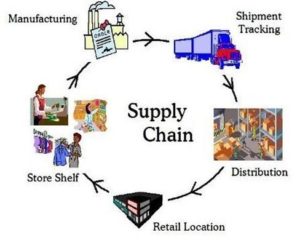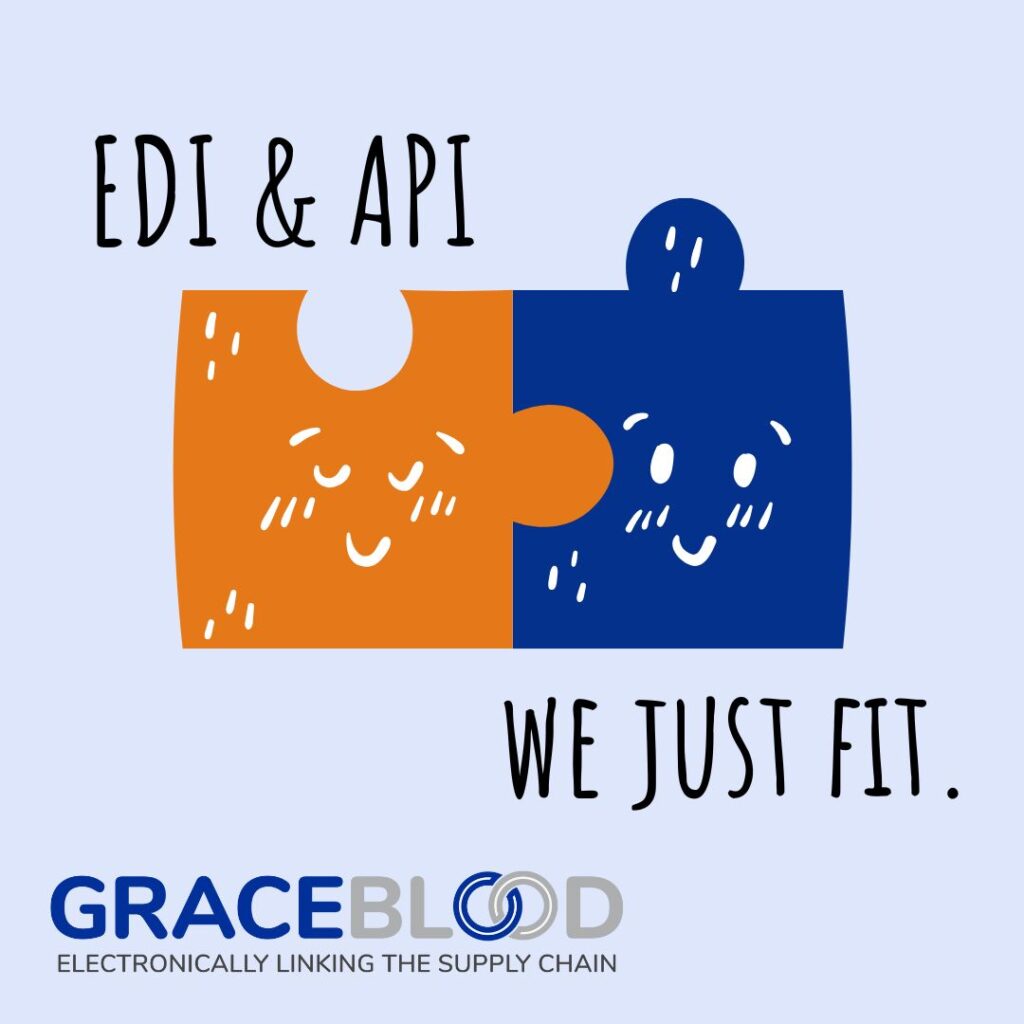
Businesses of all sizes are constantly seeking ways to optimize their financial operations (at least, they should be), improve cash flow management and automate invoice processing. One of the most transformative innovations in financial processing is EDI, which has become a cornerstone of invoice automation. EDI replaces traditional paper-based invoicing with a fully automated digital system that enables seamless data exchange between businesses, suppliers, financial institutions, retailers and logistics providers. By leveraging EDI for invoice automation, companies can eliminate the inefficiencies associated with manual data entry, reduce costly errors, and accelerate payment cycles. Everyone wants to get paid faster, right? This automation not only minimizes the administrative burden but also enhances compliance with industry standards. Furthermore, businesses benefit from improved financial visibility, streamlined B2B transactions, and the ability to scale operations more efficiently. With the increasing demand for real-time data access and error-free transactions, implementing EDI-driven invoice automation is no longer just an option—it is a necessity. This blog explores the fundamentals of EDI, how it transforms invoice processing, and why businesses should integrate it into their operations to stay competitive.
Table of Contents
- How EDI Transforms Invoice Processing
- How Does EDI Invoicing Work?
- Key Reasons Why Your Business Should Use EDI for Invoicing
- Industries Using EDI Invoicing
- Implementing Invoicing via EDI
- Challenges of EDI Invoicing
- Best Practices
- EDI in the Fintech and Accounting Industry
- The Future of EDI Invoicing
How EDI Transforms Invoice Processing
- Eliminates Paper-Based Invoicing
EDI removes the need for physical invoices, reducing paper waste and administrative overhead. Eliminating paper invoices leads to a more environmentally friendly approach, cutting down on carbon footprints associated with printing and mailing. This process ensures all invoices are stored digitally (at least until you archive), reducing the risk of document loss or damage and improving overall record-keeping and compliance.
- Reduces Processing Time and Human Errors
Automating data exchange minimizes mistakes and accelerates invoice approvals and payments. Specifically, EDI eliminates keying errors that occur in manual entry, ensuring data accuracy and preventing costly payment disputes. Automation allows for real-time validation and verification, ensuring invoices meet predefined criteria before processing. Thus, businesses experience faster turnaround times, reducing the waiting period between invoice generation and payment receipt, leading to healthier cash flow management.
- Seamless Integration with Accounting Systems
EDI integrates directly with enterprise resource planning (ERP) systems like NetSuite and Canopy, ensuring smooth data flow. This integration allows businesses to automatically update their financial records without the need for manual intervention, ensuring accurate tracking and reporting. By syncing with existing ERP systems, EDI helps maintain consistency across departments and stakeholders, ensuring that procurement, finance, and accounting teams are always aligned. Again, businesses benefit from improved forecasting and financial planning by having up-to-date, real-time insights into invoice statuses and payments via a powerful dashboard like VelociLink™ Analytics.
How Does EDI Invoicing Work?
EDI invoicing follows a structured process that involves:
Invoice Creation: The supplier generates an invoice in their internal business application.
Data Transformation: The invoice data is transformed into the required EDI format using translation software or a third-party service such as GraceBlood’s VelociLink™ platform.
Transmission: The formatted EDI invoice is sent to the buyer’s system through a secure communication channel, such as AS2, SFTP, or a value-added network (VAN).
Receipt and Processing: The buyer’s system receives, validates and consumes the invoice into their accounting or enterprise resource planning (ERP) system such as D365 or Acumatica.
Acknowledgment: An acknowledgment message (e.g., EDI 997 in ANSI X12) is sent back to confirm receipt. It’s important to note that this does not confirm the invoice will be paid, only that a document has been received.
Key Reasons Why Your Business Should Use EDI for Invoicing
-
Compliance with Industry Regulations and Standards
EDI follows globally recognized invoicing and data exchange standards, ensuring businesses remain compliant with regulatory requirements. What’s more, many industries and certainly many of your trading partners, mandate electronic invoicing, and adopting EDI helps businesses avoid penalties associated with non-compliance. Automated audit trails and documentation make compliance reporting more efficient and accurate.
-
Streamlined Business-to-Business (B2B) Transactions
EDI provides a structured and standardized way to exchange invoices, ensuring seamless B2B transactions. Integration with supply chain and procurement systems enables synchronized workflows, reducing bottlenecks in invoice approvals. Enhanced interoperability allows businesses to work efficiently with partners, regardless of their accounting system.
-
Enhanced Financial Reporting and Reconciliation
EDI’s real-time data exchange, particularly with API integration, allows businesses to track invoice statuses, helping finance teams manage accounts receivable and payable more effectively. Automated reconciliation ensures that invoice amounts match payments, reducing errors in financial statements. Ultimately, businesses can generate accurate financial reports faster, aiding in forecasting and strategic decision-making.
-
Scalability to Support Growing Business Needs
As businesses expand, EDI provides a scalable solution (like GraceBlood’s VelociLink™) that can handle increased invoice volumes without requiring additional manual labor. And automation ensures that growing transaction volumes do not lead to inefficiencies or processing delays. EDI’s adaptability allows businesses to connect with new partners and integrate with emerging technologies such as AI-driven analytics.
Industries Using EDI Invoicing
EDI invoicing is widely used across various industries, including:
Retail: Ensures timely invoicing and payment in large supply chains.
Healthcare: Facilitates seamless billing between providers, insurers, and suppliers.
Manufacturing: Simplifies transactions in complex supply chains.
Logistics: Streamlines billing for freight and transportation services.
Government: Supports efficient procurement and payment processes.
Implementing Invoicing via EDI
Transitioning to EDI invoices involves several steps:
-
Assess Your Needs
Evaluate your current invoicing process and identify pain points, such as high error rates, delays, or compliance challenges. Determine how EDI can address these business related issues.
-
Choose an EDI Solution
Options include:
On-Premises Software: Installed and managed internally, suitable for large organizations with in-house IT teams.
Web-Based Services: Hosted by third-party providers, ideal for small to medium-sized businesses and typically do not integrate with internal business applications.
EDI-as-a-Service: Comprehensive solutions that include setup, maintenance, and support. These solutions are ideal for any size business that wants EDI off their plate so they can focus on more strategic endeavors.
-
Select an EDI Partner
Work with an EDI provider or consultant to ensure a smooth implementation. Choose a partner with experience in your industry and expertise in your integration needs (if applicable).
-
Set Up Communication Paths
Establish secure data transmission paths (e.g., AS2, SFTP, or VAN) based on your trading partners’ preferences.
-
Integrate with Existing Systems
Ensure your EDI solution integrates seamlessly with your accounting, ERP, or supply chain management systems.
-
Test and Validate
Conduct thorough testing with your trading partners to ensure compatibility, accuracy, and compliance.
-
Train Your Team
Provide training for employees involved in invoicing and accounts payable/receivable to ensure they understand the new process.
Challenges of EDI Invoicing
While this process offers numerous benefits, it also comes with challenges:
Initial Setup Costs: Implementing EDI requires upfront investment in software, infrastructure, and training. With EDI-as-a-Service platforms, setup costs are often lower than on-premise since there is no hardware or software to purchase. Furthermore, it’s important to factor in peripheral costs such as the cost of full-time employees to manage on-premise solutions.
Complexity: Configuring EDI solutions and ensuring compatibility with trading partners can be technically demanding.
Change Management: Transitioning from manual to automated processes may require cultural and operational adjustments.
Vendor Dependence: Relying on third-party providers for EDI services can lead to dependency on external expertise. When engaging with these types of EDI providers, it’s crucial to understand the subscription model and check references before handing over such an important part of your business.
Best Practices
To maximize the benefits, follow these best practices:
-
Standardize Data
Ensure your invoice data is accurate, consistent, and formatted according to the agreed-upon EDI standards.
-
Communicate with Trading Partners
Maintain open communication with your trading partners to address any issues, updates, or changes in requirements.
-
Monitor and Audit
Regularly monitor your EDI transactions to detect errors or discrepancies. Conduct audits to ensure compliance and identify areas for improvement.
-
Stay Updated
Keep your EDI software and systems up to date with the latest standards and technologies to maintain compatibility and security. This often means paying for annual maintenance and if that’s not something you want to do, it may be time to consider a solution like VelociLink™.
-
Leverage Analytics
Use EDI data from a dashboard like VelociLink™ EDI Analytics to gain insights into your invoicing process, identify trends, and make informed decisions.
EDI in the Fintech and Accounting Industry
EDI’s Role
EDI plays a crucial role in financial technology by automating invoice exchanges, enabling seamless transaction processing between businesses. By utilizing standardized formats and automated workflows, EDI allows financial institutions, businesses, and suppliers to exchange invoices and payment details with increased efficiency and accuracy. This system reduces the reliance on manual intervention, leading to improved compliance, better audit trails, and stronger financial controls. Furthermore, EDI ensures that businesses remain competitive by providing real-time data access.
EDI in Accounts Payable and Invoice Processing
Many companies use EDI to automate accounts payable workflows, ensuring invoices are validated, approved, and paid without delays. In traditional invoice processing, businesses may encounter significant bottlenecks caused by manual data entry errors, missing documentation, or slow approval chains. With EDI, the entire accounts payable process is digitized and automated.
- Invoice Validation: EDI helps businesses automatically validate invoices by cross-referencing purchase orders and contract terms to prevent discrepancies and fraud.
- Approval Workflow Automation: By integrating with ERP systems, EDI routes invoices through approval workflows, ensuring they are reviewed in a timely manner.
- Automated Payment Processing: Once approved, invoices are automatically processed for payment, reducing the risk of late fees, enhancing supplier relationships, and improving cash flow predictability.
- Audit Trail and Compliance: EDI provides a complete digital audit trail for invoices, ensuring compliance with regulatory standards and simplifying audits.
AI in EDI Automation
Artificial intelligence is set to further revolutionize EDI by enhancing invoice matching, fraud detection, and predictive analytics for smarter financial management. The combination of AI and EDI can deliver significant improvements in how businesses process financial transactions:
- Advanced Invoice Matching: AI-driven EDI systems can automatically reconcile invoices against purchase orders and delivery receipts, reducing the need for human intervention.
- Fraud Detection and Risk Analysis: Machine learning algorithms can analyze patterns in invoice data, flagging suspicious transactions and reducing the risk of fraud.
- Predictive Analytics for Cash Flow Management: AI can analyze historical payment data to provide insights into future cash flow trends, helping businesses make informed financial decisions.
- Automated Error Correction: AI can detect and correct discrepancies in invoices, ensuring accurate data processing and reducing delays in payment cycles.
The Future of EDI Invoicing
As technology evolves, so does EDI invoicing. Emerging trends include:
Cloud-Based Solutions: Increasing adoption of cloud platforms for scalability, flexibility, and reduced infrastructure costs.
API Integration: Combining EDI with APIs to enable real-time data exchange and enhanced connectivity.
Blockchain: Leveraging blockchain technology for secure, transparent, and immutable transaction records. We predict that blockchain will be leveraged heavily in the food industry in the future.
Artificial Intelligence (AI): Automating decision-making and improving accuracy with AI-powered EDI tools. Another prediction is that AI will be heavily used in the EDI industry in the coming years.
Don’t be Afraid of Invoicing via EDI
EDI invoice automation is a game-changer for businesses seeking to streamline their financial processes. By eliminating manual entry, reducing errors, and accelerating processing times, EDI provides a significant advantage in today’s ultra-competitive business landscape. It enables organizations to enhance compliance, optimize cash flow, and improve overall operational efficiency. As industries continue to evolve with digital transformation, businesses that fail to adopt EDI, and/or utilize modern practices like APIs, risk falling behind. The efficiency, accuracy, and scalability offered by EDI-driven automation empower companies to build stronger financial infrastructures while maintaining seamless B2B transactions. Additionally, as AI and machine learning technologies further enhance EDI capabilities, the future of invoice automation promises even greater optimization and innovation. Implementing cloud-based solutions like GraceBlood’s VelociLink™ can revolutionize invoice management, ensuring more accurate, faster, and cost-effective financial processes. Adopting invoice automation, companies can position themselves for long-term success, sustainability, and financial growth in an increasingly digital world. If you’re still manually processing invoices, speak to one of our experts for a free consultation.








